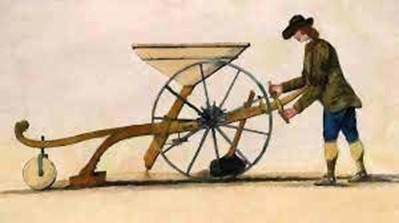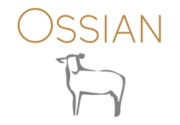
5 of 20 Stages of the Evolution of British Wool
The Agricultural Revolution of 1500- 1850
The revolution in argiculture brought huge improvement to the quantity of food produced with new methods of farming. This was needed to feed the inhabitants of the new cities. People moved from the country to work in the growing woollen industry.
Not all the changes were good for wool quality, most notably, sheep were bought in off the heaths, downs and bare fallows and fed on a diet of turnips and clover, this helped to provide the cities with an increased supply of mutton but had a detrimental effect on the quality of the wool fleeces. (Jennings, 1975)

The new iron plough, bought in new efficiencies in production
Ref: https://www.bbc.co.uk/bitesize/topics/zm7qtfr/articles/z6kg3j6

Turnips and clover were key to the Agricultural revolution, both plants build up nitrogen in the soil which then acts as a fertiliser for the other rotational crops, improving their yield.





